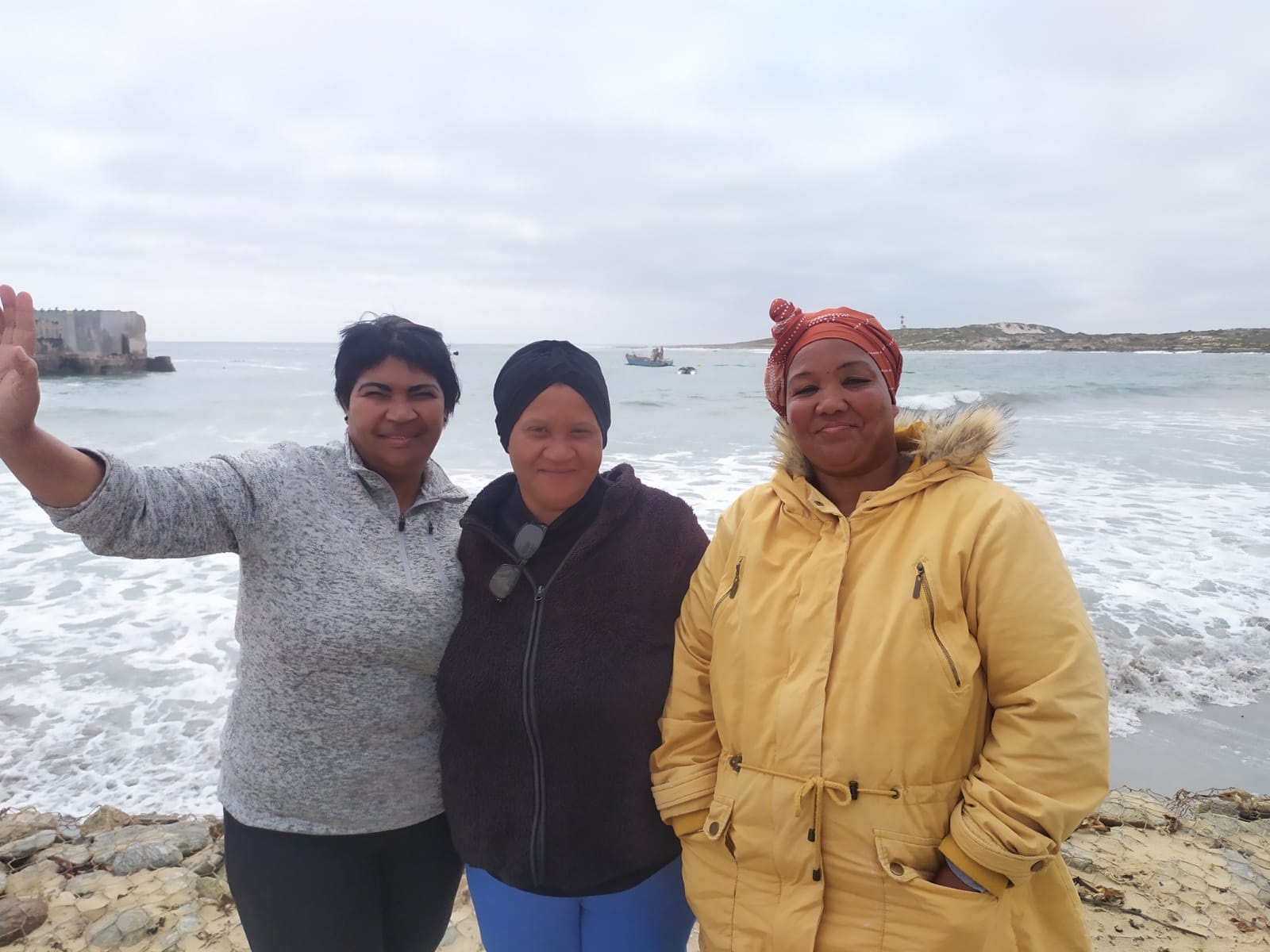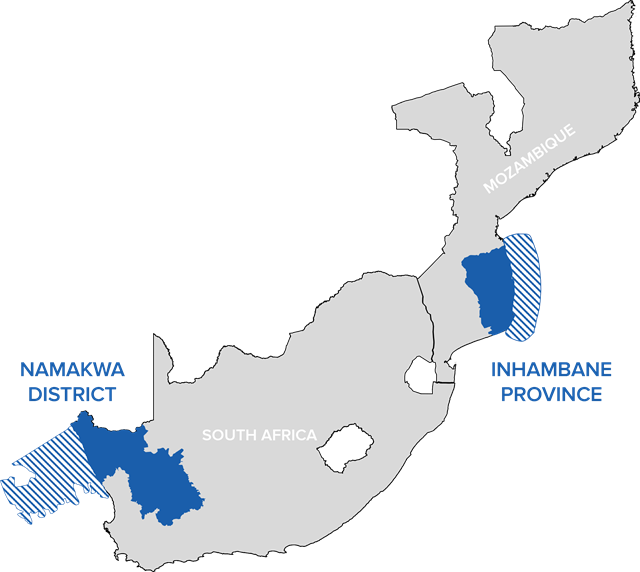The Northern Cape coast of South Africa is a breathtaking stretch of coastline where the rugged beauty of arid landscapes meets the vibrant life of the Atlantic Ocean
This coastline—spanning about 380 kilometers—extends from the Orange River in the North to just beyond the Green River in the South. Its cold, nutrient-rich Benguela current breathes life into these waters by shaping the productivity and marine biodiversity and creating a thriving industrial fishery in the region.
The region’s fishing villages offer a glimpse into the long-standing traditions and resilient spirit of the local communities. These towns are rich in history and culture, where generations have relied on the ocean for their livelihoods. However, the region faces significant challenges due to environmental and socio- economic conditions, including mining and associated illegal activities (such as diamond mining, poaching, illegal waste dumping), port development, overfishing, poor management practices, and climate change impacts on fisheries and coastal conditions.
Despite these challenges, the coastline's rich marine and coastal biodiversity presents opportunities for sustainable development, such as eco-tourism, marine aquaculture, and sustainable fishing. Empowering local communities, especially women and youth, to sustainably manage and utilise these resources is crucial for enhancing socio-economic development, building a more resilient community, and conserving the environment.
why is it important?

© Rodolphe Holler
Biodiversity
The Benguela ecosystem boasts extraordinary marine biodiversity, featuring endemic species found nowhere else in the world. The coastline serves as a vital waypoint for migrating marine species like whales, and its waters are breeding grounds for the endangered African penguin, the endemic West Coast Rock Lobster and Cape gannet. South Africa has an abundance of seaweed growing along its western coastline. Kelp, a large brown seaweed, has been of particular interest due to its many benefits that influence the overall biodiversity of ecosystems. Kelp forests also create complex ecosystems by providing shelter, nursery sites, protection and nutrition to various marine life.

© Ronald Newman
Ocean and People
The ocean provides many food resources and assists in driving the economy. Many marine resources such as Kelp, provide various direct and indirect benefits for humans through sustainable harvesting which creates job opportunities, and support commercial and recreational fishing, as well as tourism. The kelp ecosystem supports rich fish stocks and supports zooplankton, crustaceans and various bird species. Through our work in the region, we aim to support, encourage and empower the local communities of the Namakwa District, especially women and youth, to contribute toward marine and coastal conservation efforts, participatory decision-making processes, access to resources and furthering economic development.
our priorities
Drawing on research and development, we work with communities, with a focus on women and youth, to pilot and scale biodiversity and climate-friendly economic opportunities, by learning from best practices in kelp cultivation kelp
![]()
Hectares
By 2030, we will assist in large scale ocean conservation of 75 000 square kilometers (7.5 million hectares) through a seascape approach in the Namakwa District.
![]()
Blue carbon
We are scoping the potential carbon pathways with a focus on kelp forests.
![]()
Fisheries production
By 2030, we will address production and market access of at least 2 fisheries in the Namakwa District, including kelp and cape bream.
![]()
Economic Development
By 2030, we will create at least 100 job opportunities particularly for women and youth in the blue economy, including kelp and fisheries value chains and coastal restoration.

© Douglas Klug


